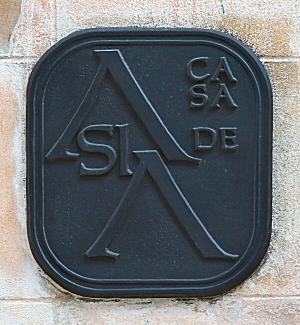
 This colonial building, built in 1688,
was the property of some aristocratic families during different
periods, such as the Castellón, Luque and Hermosilla. The owners
of the building had a privileged place in the society until the
19th century, as they had to shoulder the task of chaplaincy.
Chaplains committed to be the instruments of God in the process
of restoring the mental, physical, social and spiritual health
of the humanity, particularly of those that were most in need.
This colonial building, built in 1688,
was the property of some aristocratic families during different
periods, such as the Castellón, Luque and Hermosilla. The owners
of the building had a privileged place in the society until the
19th century, as they had to shoulder the task of chaplaincy.
Chaplains committed to be the instruments of God in the process
of restoring the mental, physical, social and spiritual health
of the humanity, particularly of those that were most in need.
At the end of the 20th century, the deterioration of the
building necessitated a through restoration. On the other
hand, as a certain part of Havana's historical-artistic
heritage, it was already included in the process of restoration
of the historic center of the city. During the restoration
process the halls and the decorated ceilings were rescued, and some
mural paintings were discovered. It was inaugurated as Casa de
Asia Museum in 1997.
The museum has a rich collection of
samples of Asian culture, enriched by the donations of different
governmental institutions of the countries of the region. It
should be also mentioned here that Fidel Castro has donated some
gifts to the museum that he received as President of Cuba.
At the entrance of the museum a Terracotta soldier and the metal statuette of the Hindu deity Shiva Nataraja welcome you. The big vase with the picture of Ho Chi Minh is the gift of Vietnam to Fidel Castro that donated it to the museum.

The Casa de Asia is located on the Mercaderes
street #111, between the Obispo and the Obrapia streets,
opposite to the Maqueta de la Habana Vieja and the Cinematógrafo
Lumiére.
The museum has a nice courtyard;
however, the exhibition halls are on the upper floor. The rooms
below function as a children’s school today.
The collection consists of pieces of the
decorative art that show the artistic and cultural heritage of
numerous countries of the East. These are the porcelains from
the Ming and Ding dynasties of China, Chinese and Japanese
furniture, chests made of lacquered wood, curved wood from India
and Ceylon, Japanese byōbus (folding screens) of
19th century, rubies and sapphires from Cambodia, Thailand and
Vietnam, ancient weapons, such as the samurai-style sword from
tenth-century Laos and the Katanas from Japan (traditional
swords), armors from Japan, traditional costumes like kimono, ivory fans,
figures made of jade, models of boats from Bangladesh etc.
The museum has also a library on the
ground floor,
specialized in all what is related with Asia, where you can find
also some rare original books.